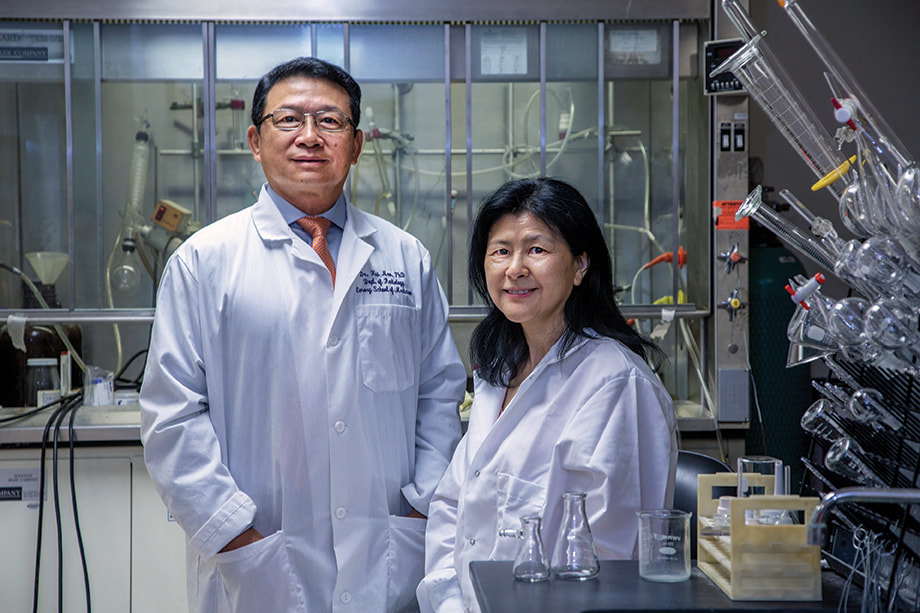Radiology and Imaging Sciences Research Teams Productive During COVID-19 Slowdown
by sam engle
Research in Radiology and Imaging Sciences has remained quite active this year despite the months-long slow-down imposed by the COVID-19 pandemic.
Some labs shifted their focus a bit and developed investigations responsive to calls for COVID-related research. In particular, Imaging Informatics team members Drs. DeCecco, Gichoya, Banerjee, and Trivedi have been working on national efforts to develop artificial intelligence (AI) and other imaging-related tools to help diagnose and predict COVID-19 outcomes. They also are working with companies like Siemens and smaller firms on related projects.
On the basic science side, Dr. Mao’s lab worked on developing a nanoparticle precursor agent for detecting COVID-specific antibodies in blood samples.
Clinically, Emory Radiology Research faculty have been involved in research projects initiated in other clinical departments to develop tools and techniques for diagnosing, treating (e.g., low-dose radiation) and preventing COVID.
For those not engaged in COVID-related research, the time spent working remotely was actually busier and more productive than anyone expected. Writing topped everyone’s to-do list and resulted in about five new grant proposals submitted every month. The slowdown also gave researchers time to complete and submit manuscripts already in progress as well as to initiate and often complete new articles in record time.
The slow-down impacted not only faculty but also staff and trainees. Lab leaders kept their teams busy with literature reviews, data analyses, and, of course, writing and editing. Some data sets that had remained on people’s “to-do” lists for quite a while finally underwent analyses and were used either for articles or as preliminary data for grant submissions.
A number of grant proposals submitted pre-COVID were awarded in early summer, so faculty were able to successfully start new projects as we moved through the ramp-up phases.
COVID is certainly one of the most severe crises facing the world today. Despite the uncertainty and worry as the pandemic evolved, our faculty have embraced the exciting opportunities to think outside of the box and create new solutions that will change the practice of medicine now and as we transition to whatever the next phase of life brings us. Our research faculty, staff, and trainees certainly rose to the challenge this year of maintaining and even growing their programs in these formidable circumstances!
Some labs shifted their focus a bit and developed investigations responsive to calls for COVID-related research. In particular, Imaging Informatics team members Drs. DeCecco, Gichoya, Banerjee, and Trivedi have been working on national efforts to develop artificial intelligence (AI) and other imaging-related tools to help diagnose and predict COVID-19 outcomes. They also are working with companies like Siemens and smaller firms on related projects.
On the basic science side, Dr. Mao’s lab worked on developing a nanoparticle precursor agent for detecting COVID-specific antibodies in blood samples.
Clinically, Emory Radiology Research faculty have been involved in research projects initiated in other clinical departments to develop tools and techniques for diagnosing, treating (e.g., low-dose radiation) and preventing COVID.
For those not engaged in COVID-related research, the time spent working remotely was actually busier and more productive than anyone expected. Writing topped everyone’s to-do list and resulted in about five new grant proposals submitted every month. The slowdown also gave researchers time to complete and submit manuscripts already in progress as well as to initiate and often complete new articles in record time.
The slow-down impacted not only faculty but also staff and trainees. Lab leaders kept their teams busy with literature reviews, data analyses, and, of course, writing and editing. Some data sets that had remained on people’s “to-do” lists for quite a while finally underwent analyses and were used either for articles or as preliminary data for grant submissions.
A number of grant proposals submitted pre-COVID were awarded in early summer, so faculty were able to successfully start new projects as we moved through the ramp-up phases.
COVID is certainly one of the most severe crises facing the world today. Despite the uncertainty and worry as the pandemic evolved, our faculty have embraced the exciting opportunities to think outside of the box and create new solutions that will change the practice of medicine now and as we transition to whatever the next phase of life brings us. Our research faculty, staff, and trainees certainly rose to the challenge this year of maintaining and even growing their programs in these formidable circumstances!
